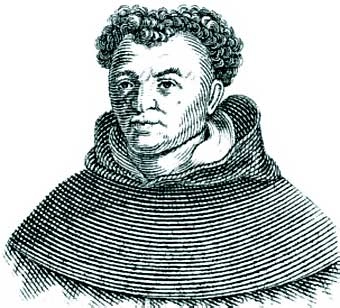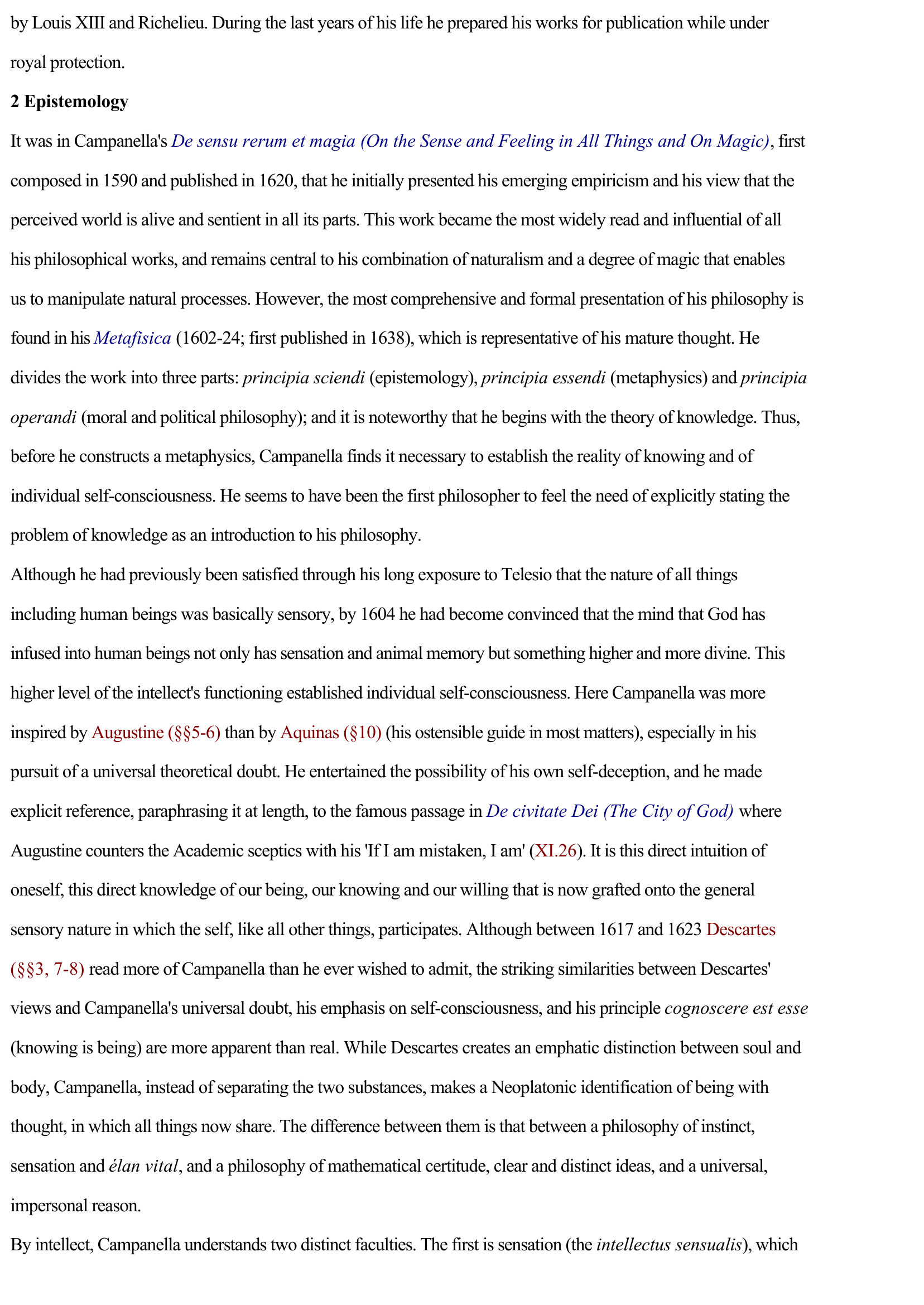Campanella, Tommaso
Publié le 22/02/2012

Extrait du document


«
by Louis XIII and Richelieu.
During the last years of his life he prepared his works for publication while under
royal protection.
2 Epistemology
It was in Campanella's De sensu rerum et magia (On the Sense and Feeling in All Things and On Magic) , first
composed in 1590 and published in 1620, that he initially presented his emerging empiricism and his view that the
perceived world is alive and sentient in all its parts.
This work became the most widely read and influential of all
his philosophical works, and remains central to his combination of naturalism and a degree of magic that enables
us to manipulate natural processes.
However, the most comprehensive and formal presentation of his philosophy is
found in his Metafisica (1602-24; first published in 1638), which is representative of his mature thought.
He
divides the work into three parts: principia sciendi (epistemology), principia essendi (metaphysics) and principia
operandi (moral and political philosophy); and it is noteworthy that he begins with the theory of knowledge.
Thus,
before he constructs a metaphysics, Campanella finds it necessary to establish the reality of knowing and of
individual self-consciousness.
He seems to have been the first philosopher to feel the need of explicitly stating the
problem of knowledge as an introduction to his philosophy.
Although he had previously been satisfied through his long exposure to Telesio that the nature of all things
including human beings was basically sensory, by 1604 he had become convinced that the mind that God has
infused into human beings not only has sensation and animal memory but something higher and more divine.
This
higher level of the intellect's functioning established individual self-consciousness.
Here Campanella was more
inspired by Augustine (§§5-6) than by Aquinas (§10) (his ostensible guide in most matters), especially in his
pursuit of a universal theoretical doubt.
He entertained the possibility of his own self-deception, and he made
explicit reference, paraphrasing it at length, to the famous passage in De civitate Dei (The City of God) where
Augustine counters the Academic sceptics with his 'If I am mistaken, I am' (XI.26 ).
It is this direct intuition of
oneself, this direct knowledge of our being, our knowing and our willing that is now grafted onto the general
sensory nature in which the self, like all other things, participates.
Although between 1617 and 1623 Descartes
(§§3, 7-8) read more of Campanella than he ever wished to admit, the striking similarities between Descartes '
views and Campanella's universal doubt, his emphasis on self-consciousness, and his principle cognoscere est esse
(knowing is being) are more apparent than real.
While Descartes creates an emphatic distinction between soul and
body, Campanella, instead of separating the two substances, makes a Neoplatonic identification of being with
thought, in which all things now share.
The difference between them is that between a philosophy of instinct,
sensation and élan vital , and a philosophy of mathematical certitude, clear and distinct ideas, and a universal,
impersonal reason.
By intellect, Campanella understands two distinct faculties.
The first is sensation (the intellectus sensualis ), which.
»
↓↓↓ APERÇU DU DOCUMENT ↓↓↓
Liens utiles
- CITÉ DU SOLEIL (LA), Civitas Solis, 1623. Tommaso Campanella (résumé)
- ATHÉISME VAINCU (L’) (résumé & analyse) de Tommaso Campanella
- APOLOGIE DE GALILÉE de Tommaso Campanella (1568-1639) (résumé & analyse)
- La Cité du Soleil de Tommaso Campanella (résumé et analyse)
- MONARCHIE DU MESSIE - Tommaso Campanella - résumé, analyse

































